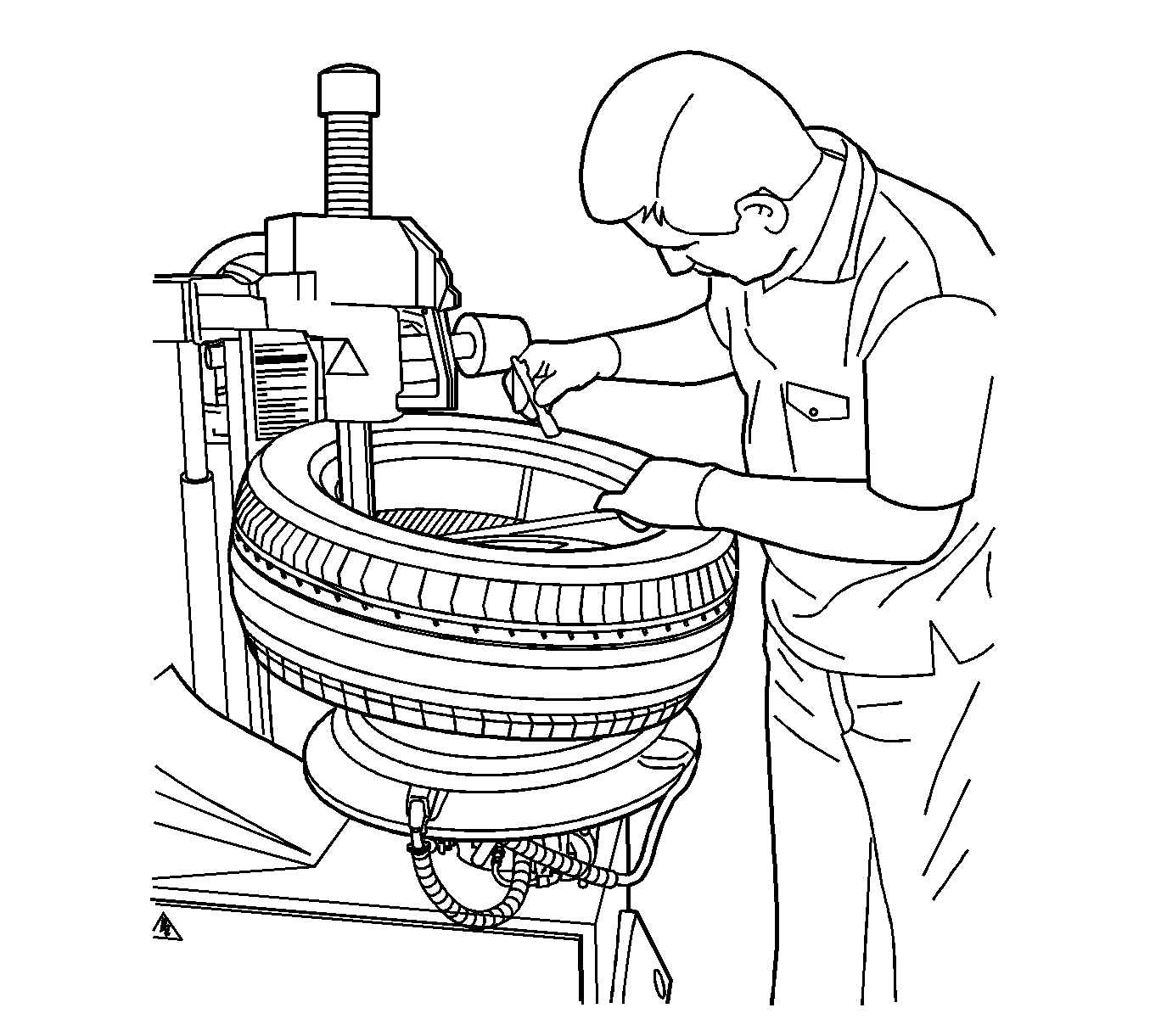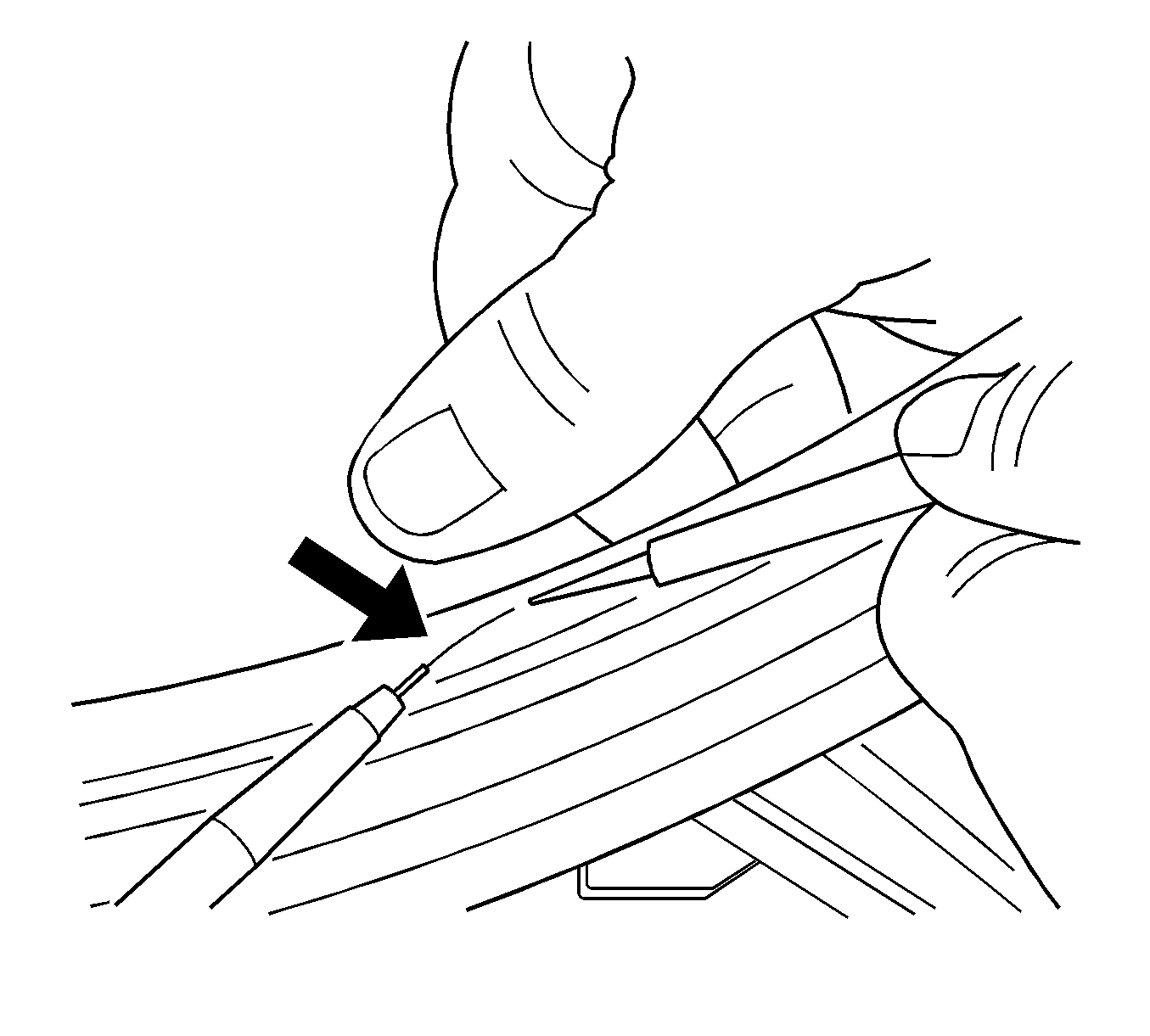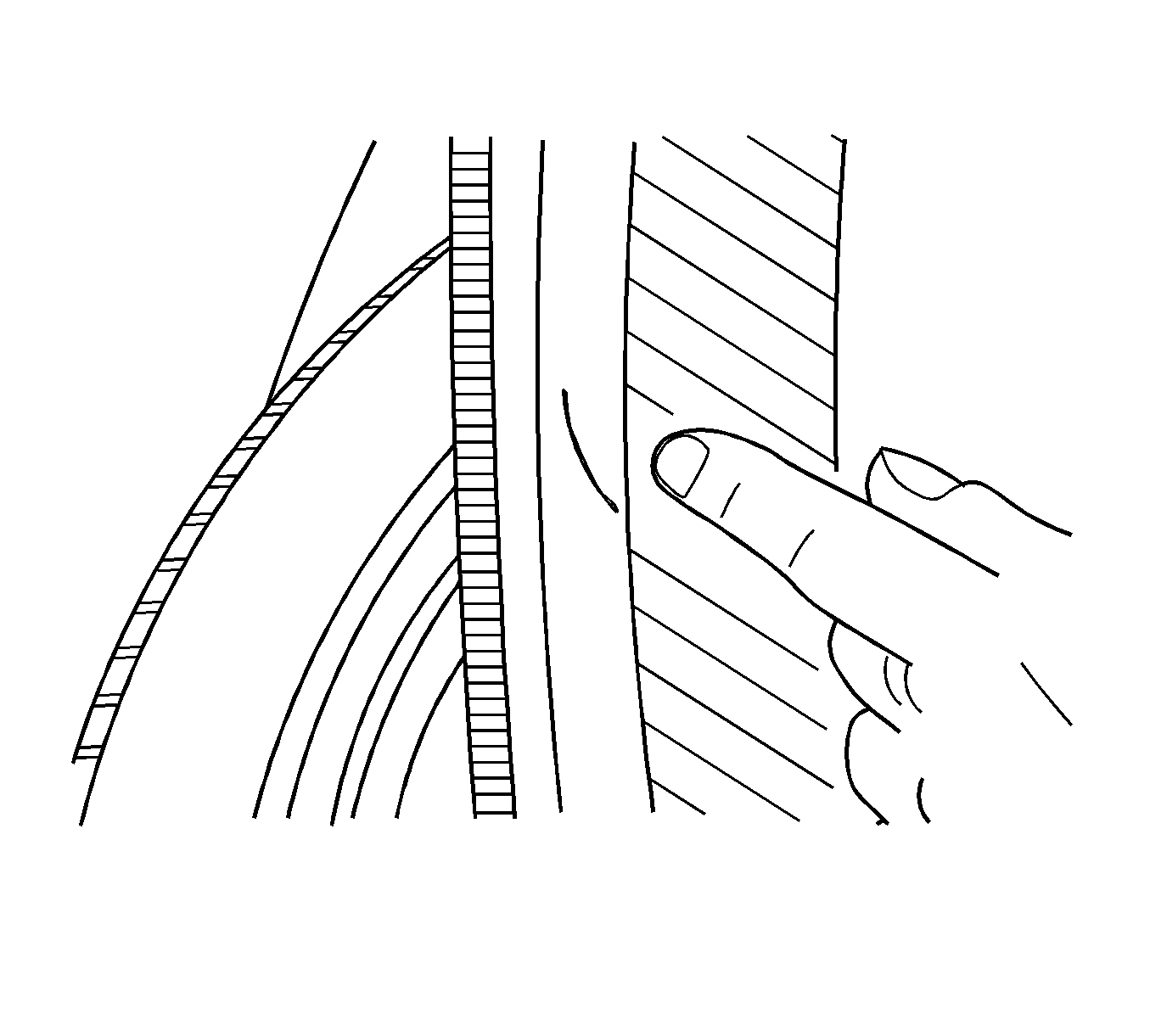Product Safety - Tire Replacement

| Subject: | 05049 -- Tire Replacement |
| Models: | 2004-2005 Chevrolet Lumina S, Lumina SS, Caprice SS |
Condition
General Motors has decided that a defect which relates to motor vehicle safety exists in certain 2004 and 2005 Chevrolet SS sedan, Lumina SS Coupe and Caprice SS and 2005 Model Year Lumina S model vehicles exported to the Middle East and fitted with 235x45R17 tires. Tires fitted to these vehicles may have been damaged during installation, and may deflate suddenly and without prior warning.
If this happens while the vehicle is moving, a crash could result.
The cause of the damage is related to the assembly process, and is not the result of tire manufacture.
Correction
Dealers are to inspect replace all 5 tires (4 Road tires plus spare) on affected vehicles for possible damage which may have occurred during assembly of the tire to rim, and to replace any tires which exhibit damage. (Refer Attachment 1 for details of inspection.)
Vehicles Involved
Involved are all Lumina S Sedan, SS Sedan and Coupe and Caprice SS model vehicles built within these VIN breakpoints:
Year | Division | Model | From | Through |
|---|---|---|---|---|
2004-2005 | Chevrolet | Lumina SS Coupe | 6G1VK14F44L281014 | 6G1VK14F94L314296 |
2004-2005 | Chevrolet | Lumina SS Sedan | 6G1YK52F14L283553 | 6G1ZK52F15L378978 |
2005 | Chevrolet | Lumina S Sedan | 6G1ZK52BX5L292027 | 6G1ZK52B55L388048 |
2004-2005 | Chevrolet | Caprice SS | 6G1LM54F55L267987 | 6G1LM54FX5L388028 |
Important: Dealers should confirm vehicle eligibility through GMVIS (GM Vehicle Inquiry System) prior to beginning recall repairs. [Not all vehicles within the above breakpoints may be involved.]
A listing of affected vehicles will be sent to the wholesale delivery dealer. Dealers that have no involved vehicles currently assigned, will not receive a report with the recall bulletin.
Dealer Action
Dealerships are requested to take the following action following presentation of a vehicle which is subject to this recall.
Dealers may elect to have this work carried out by a Yokohama Tire agent, or to carry out inspection and replacement in-house.
If work is to be performed by Yokohama agent
- Chevrolet dealership to complete ‘inspection record’ form attached at Attachment 2 (make photocopies of this original as required.)
- Chevrolet dealership to contact local Yokohama agent and arrange for tires to be inspected and replaced where necessary, stressing that this is to satisfy the requirements of this recall. (Yokohama agents will receive details of this action, at approximately the same time as GM dealerships) Chevrolet dealership to present vehicle together with the ‘inspection record’, to the Yokohama agent for tire inspection and replacement as required.
- Yokohama agent will remove tires, inspect and either refit original tires, or replace any which are found to be damaged, following the instructions shown in Attachment 1. The Yokohama agent will determine whether any tire needs to be replaced as a result of the damage described, and will complete the ‘inspection record’. Attach the ‘inspection record’ to the sublet invoice for MSO review.
- Following completion of tire replacement by Yokohama agent, ensure that replaced tires are returned to your dealership, and are held in a secure location.
- Chevrolet dealership is to scrap any replaced tires by destroying the tire carcass as shown in para 8 of Attachment 1. This is to be performed in the presence of, or by your MSO. Hold all replaced tires for destruction by MSO.
- Chevrolet dealership to prepare warranty claim. Sublet cost to be shown as ‘Net Items". Dealer handling allowance of 1.0 hrs per vehicle to be claimed as labor cost. Hold the sublet invoice and inspection form for MSO review.
- Following destruction of the tires by MSO, submit warranty claim to the MSO for approval code necessary for claim acceptance, and submit warranty claim with authorization code.
If work is to be performed in-house within the dealership, Chevrolet dealership to:
- Complete ‘inspection record’ form attached at Attachment 2 (make photocopies of this original as required.
- Carry out tire removal and inspection process in accordance with attachment 1 below.
- In the event of a tire being identified as requiring replacement, contact Yokohama tire agent and purchase replacement tire, advising that tire is required for this recall.
- Hold replaced tires in a secure location pending MSO examination.
- Replaced tires MUST be scrapped by destroying the tire carcass as shown in para 8 of Attachment 1. This is to be performed in the presence of, or by your MSO. Hold all replaced tires for destruction by MSO, and recording on the Inspection Report (Attachment 2).
- Prepare warranty claim. Quote tire part number 92111718. Hold claim for approval together with ‘Inspection record’ (Attachment 2).
- Following destruction of the tires by MSO, submit warranty claim to the MSO for approval code necessary for claim acceptance, and submit warranty claim with authorization code.
Please take special note: It has been judged that this damage to tires will render them unsuitable for use on a motor vehicle. It is therefore critical that all tires, which are replaced, are scrapped in the manner described.
Claim Information
Submit a Product Recall Claim with the information indicated below:
Repair Performed | Part Count | Part No. | CC-FC | Labor Op | Labor Hours | Net** Item |
|---|---|---|---|---|---|---|
Sublet Inspection and Replacement | -- |
| MA-96 | V1345 | 1.0 | ** |
In-House Inspection and Replacement | As Applicable | 92111718 | MA-96 | V1346 | 1.7 | -- |
** The amount identified in the "Net Item" column should be the actual price invoiced by the Yokohama agent to for carrying out inspection and replacing any damaged tires, and should include sublet cost of tires and agent labor cost. A price ceiling will apply based on Yokohama tire price, and agent labor cost, and will be quoted in a separate bulletin. In the event that invoice cost exceeds the ceiling price, immediately notify your MSO. | ||||||
Customer Notification
Dealers should notify customers using the attached sample letter.
Dealer Recall Responsibility -- All
All unsold new vehicles in dealers' possession and subject to this recall must be held and inspected/repaired per the service procedure of this recall bulletin before customers take possession of these vehicles.
Dealers are to service all vehicles subject to this recall at no charge to customers, regardless of mileage, age of vehicle, or ownership, from this time forward.
Customers are to be contacted by the dealer. Arrangements are to be made to make the required correction according to the instructions contained in this bulletin. A copy of the customer letter is provided in this bulletin for your use in contacting customers.
In summary, whenever a vehicle subject to this recall enters your vehicle inventory, or is in your dealership for service in the future, you must take the steps necessary to be sure the recall correction has been made before selling or releasing the vehicle.
Attachment 1 : Inspection and Replacement Instructions
Observing all standard operating procedures and/or work instructions currently in place proceed as follows:
- Remove the spare wheel/tire assembly from its location.
- Raise the vehicle and remove all wheel/tire assemblies.
- Deflate all tires.
- Demount the outer bead only from the outer wheel rim. There is no need unless a cut is identified to fully remove the tire from the rim.
- Visually inspect the bead seat area of exposed bead. Refer to Figure 1.
- Determine if there is cut damage to the rubber coating of the bead seat. Refer Fig 2 through 4 for samples of cut damaged bead seat. Note that cut damage may be different in length to that illustrated; it may be shorter or longer.
- If no damage exists:
- If damage exists:
- Replace the spare wheel/tire assembly in its location.
- Install all wheel/tire assemblies on the vehicle in the original locations.
- Record action taken on Inspection record shown at Attachment 2 of this bulletin.
- Test drive the vehicle and confirm tires are balanced satisfactorily.
- Submit warranty claim together with inspection record to GM MSO.
- MSO to record scrapping of defective tires on Inspection record (Attachment 2).
Tip
To aid inspection, wipe the bead area with a damp (not wet) cloth to remove
dust and highlight any cut.
Figure 1

| 7.1. | Remount tire on the wheel applying lubricant to the exposed bead. |
| 7.2. | Inflate the tire to operating pressure. |
| 7.3. | Dynamically balance the wheel/tire assembly. |
| 7.4. | Record results of inspection on the "Inspection Record" form. |
| 8.1. | Completely demount the tire from the wheel. |
| 8.2. | Record the detail of the tire and VIN on the ‘Inspection Record’ form. |
| 8.3. | Cut the serial number. |
| 8.4. | Scrap the tire by cutting through the mid sidewall on both sides of the tire in the circumferential direction for a minimum length of 150 mm. |
| 8.5. | Obtain a new tire and mount on the wheel applying lubricant . |
| 8.6. | Inflate the tire to the operating inflation pressure. |
| 8.7. | Dynamically balance the wheel/tire assembly. |
Description and Location of Cut
The cut, which is of concern in this instance, has resulted from contact with the wheel rim during installation of the outer bead of the tire over the edge of the wheel rim.
Tire assembly sequence at vehicle build is to fit the inner bead over the wheel rim first, then the outer. bead over the outer rim. It is during assembly of the outer bead that damage to this bead may occur.
The cut is present, will be present on the sealing face of the tire on the bead at the outer face of the wheel. (Outer face being the wheel face which is visible when the wheel is assembled to the vehicle.)
The ‘inner’ bead which seals on the mounting face side of the wheel rim is the first assembled to the wheel during build, and is not affected.
The cut is generally around 5 to 10 mm in length and occurs on the tire to rim sealing surface immediately outboard of the sealing lip, of the ‘outer’ tire bead.
Examples of the cut are shown in figures 2 to 4 below.
Figure 2 -- Example of cut in tire

Figure 3 -- Example of cut in tire

Figure 4-- Example of cut in tire

Attachment 2 (Please photocopy as required and record details for each vehicle completed)
Inspection and Report Record | |
|---|---|
This is to certify that the vehicle defined below has had all tires inspected for defect as required in Vehicle Safety Recall Action 05049/ | |
Date:
VIN:
Dealership Presenting:
Yokohama Agent (if applicable):
Owner's Name:
Odometer (kms)
| |
Result of Tire Inspection X = Damage Identified and Tire Replaced OK = No Damage Found
Left Front __________________
Right Front __________________
Left Rear _____________________
Right Rear _____________________
Spare ________________________
Signed (Inspector)____________________________________________
Organization (Yokohama Dealer Name/GM Dealer Name:
Telephone Number:
| |
This is to certify that damaged tires indicated above have been scrapped by ________________________________ (method)
General Motors Manager, Service Operations ____________________________________________________________
Date________________________ |
Dear General Motors Customer:
This notice is sent to you in accordance with the requirements of the National Traffic and Motor Vehicle Safety Act.
Reason For This Recall
General Motors has decided that a defect which relates to motor vehicle safety exists in certain 2004 and 2005 Chevrolet SS sedan, Lumina SS Coupe and Caprice SS and 2005 Model Year Lumina S model vehicles exported to the Middle East and fitted with 235x45R17 tires. There is a possibility that one or more of the tires fitted to your vehicle may have been damaged during assembly to the wheel rim. This damage could possibly result in a tire deflating suddenly and without prior warning.
If this happens while the vehicle is moving, a crash could result.
It is stressed that the damage is the result of an error in the assembly process, and is not the result of a defect in tire manufacturing. Tires which have not been damaged in this way will continue to provide normal excellent service.
What Will Be Done
Your Chevrolet Dealership will arrange to inspect the tires fitted to your vehicle, and if necessary replace with new tires of the same brand and specification. This service, including all fitting and balancing cost will be performed for you at no charge .
How Long Will The Repair Take?
Please discuss this with your dealership when you present your Chevrolet to have this work carried out.
Contacting Your Dealer
To limit any possible inconvenience, we recommend that you contact ( dealer ) as soon as possible to schedule an appointment for this inspection.
We are sorry to cause you this inconvenience; however, we have taken this action in the interest of your safety and continued satisfaction with our products.
General Motors Corporation
